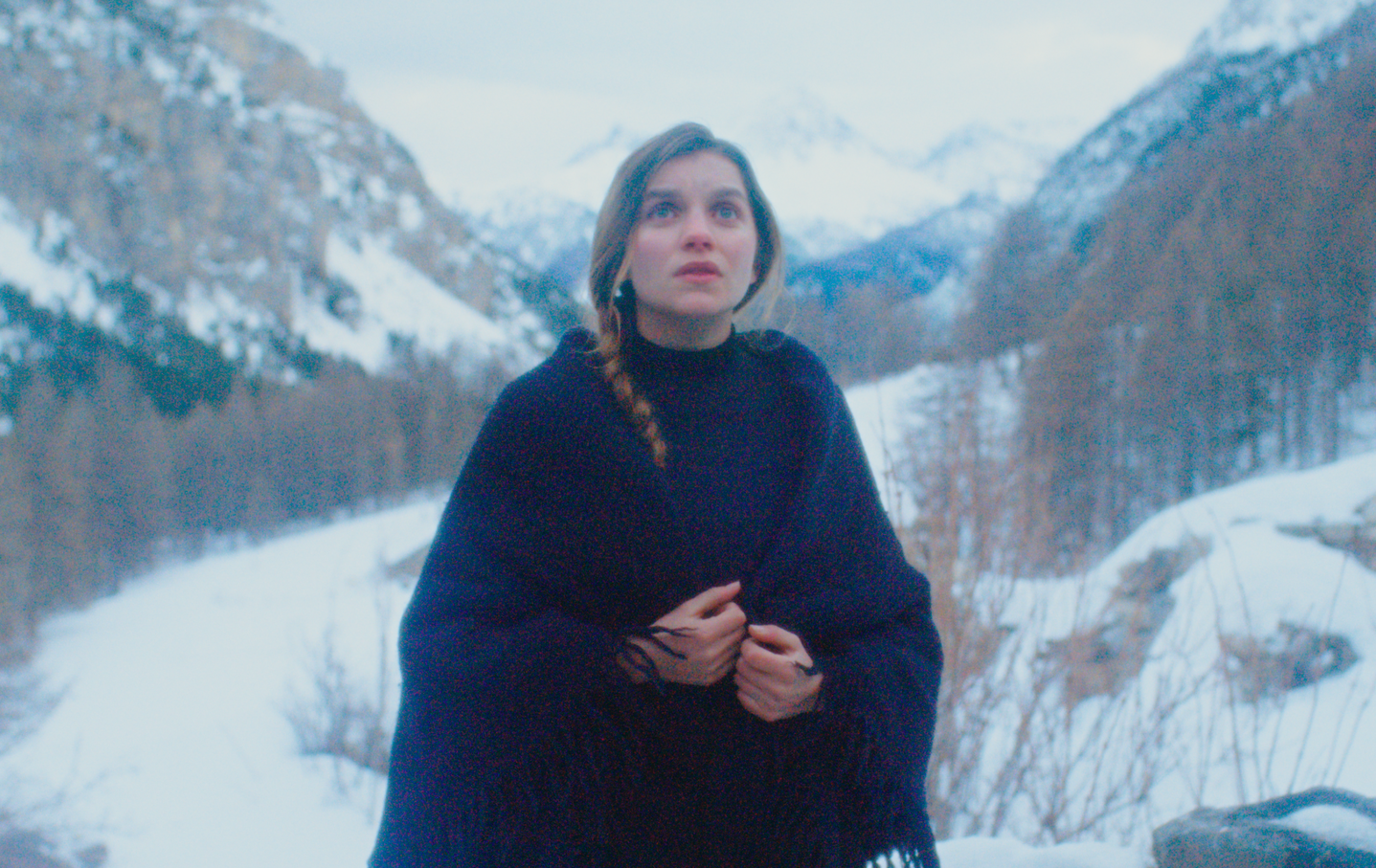The Girl in the Snow
L'engloutie
VERDICT: Louise Hemon’s feature fiction debut takes real life stories and conjures with them an enthralling period chamber piece with folk horror inflections.
The Girl in the Snow is set in the final winter of the 19th century in a remote Alpine hamlet.
Based upon stories from the family history of writer-director Louise Hemon, it tells the tale of a young teacher spending winter in a rural community steeped in old customs and folk beliefs. Hemon’s background is in documentary, best known for non-fiction mid-length films like The Strongest Man and Set in Stone. Here she uses real life recollections as a jumping off point for a fictional narrative that explores the notion of what it means for an educated, secular, progressive young woman to arrive in an old-fashioned village with the mandate to teach their children. Mimicking its own central conflict, the film itself deftly weaves together straight period drama with an air of mystery, and dare it be said, folk horror, that makes for an intoxicating experience.
Aimee (Galatea Bellugi) arrives in the village Soudain under the cover of darkness. A snowstorm howls and the dissonant choral vocals of Emile Sornin’s music bark out from the wind. As she is deposited in her abode, a schoolhouse-come-barn which sits squat, fortified against the snowdrift from above, the audience get the sense of somewhere very old. The following morning, as Aimee heads out to meet the locals, the same feeling is present – their behaviour is slightly odd, they’re somewhat bemused by the new teacher. It soon becomes evident that the womenfolk have all departed for the season, working down at the houses in the valley as servants and maids.
As she begins to teach the local children – played alongside certain other villagers by non-actors – Aimee begins to come into conflict with the belief systems that they subscribe to. She is scolded for bathing the children, the elders maintain that the layer of crust in their hair protects them. When an old man passes away, they insist on keeping a window open, even in deep winter, so his soul can escape through it, then they strap his coffin to the food of her home so that he can enjoy being near the children until the ground thaws in spring and he can buried. Most angrily, they toss her notebook in the fire when she writes down a story one of them told around the fire, claiming that locking it away like that will kill it.
The film takes place primarily in gloomy indoor spaces, often lit by lantern-light and even when outside, Aimee is wrapped in dozens of layers against the cold. It’s a hermetic world in which she lives, exemplified by Marine Atlan’s boxy cinematography that manages to feel claustrophobic even in the exterior shots that take in vast, beautiful landscapes. The Girl in the Snow is a chamber piece of sorts – the chamber being the village – and as such the typical tensions begin to emerge. Aimee is shown as sexually frustrated on a number of occasions and her glances at local lads Enoch (Matthieu Lucci) and Pepin (Samuel Kircher), who themselves seem to be lovers, are lingering and filled with longing. When one of the boys disappears after a night with Aimee, supposedly lost in a midnight landslide, a sense of mystery sets in that questions the nature of his fate, particularly when villagers begin to look at Aimee and whisper.
What Hemon does so well, here, is walk the line of ambiguity that neither implies any guilt on the part of Aimee but also doesn’t explicitly exonerate her. Is she a saviour, come to help the children be something more, or siren, there to lead the young men to their doom? The notion of a woman’s sexuality being maligned in this way is as old as time, and Hemon allows those prejudices to percolate not only in the minds of the characters but also the audience. As the abrasive notes of Sornin’s score reenforce some elemental older power, the implications remain just that. Even as the film closes, we’re left with questions over what actually occurred and just how successful was Aimee’s mission to educate the rustic mountain-folk.
Director: Louise Hemon
Cast: Galatea Bellugi, Matthieu Lucci, Samuel Kircher, Oscar Pons
Screenplay: Louise Hemon, Maxence Stamatiadis, Anais Tellenne
Producers: Alexis Genauzeau, Margaux Juvenal
Cinematography: Marine Atlan
Editing: Carole Borne
Music: Emile Sornin
Sound: Margot Testemale
Production design: Anna Le Mouel
Costume design: Joana Georges Rossi
Production company: Take Shelter (France)
Venue: Oldenburg Film Festival (International)
In French
98 minutes


